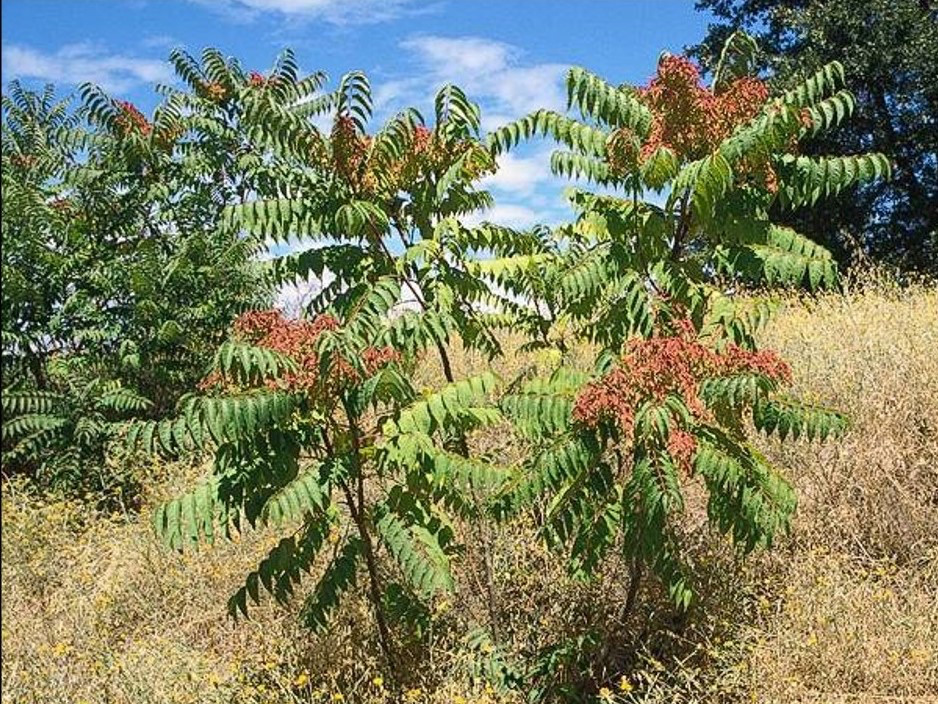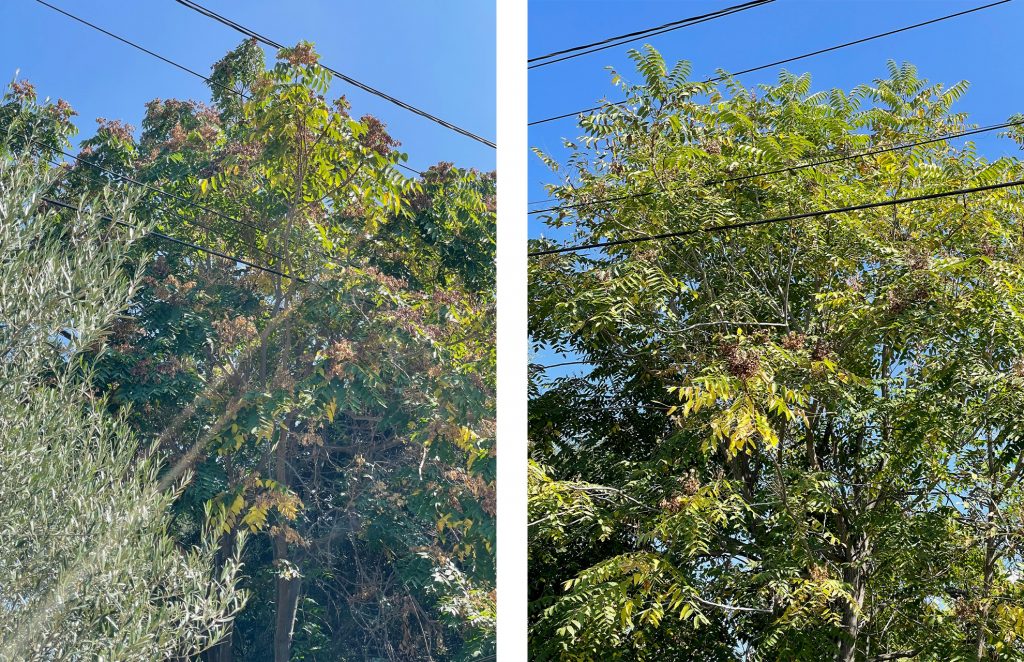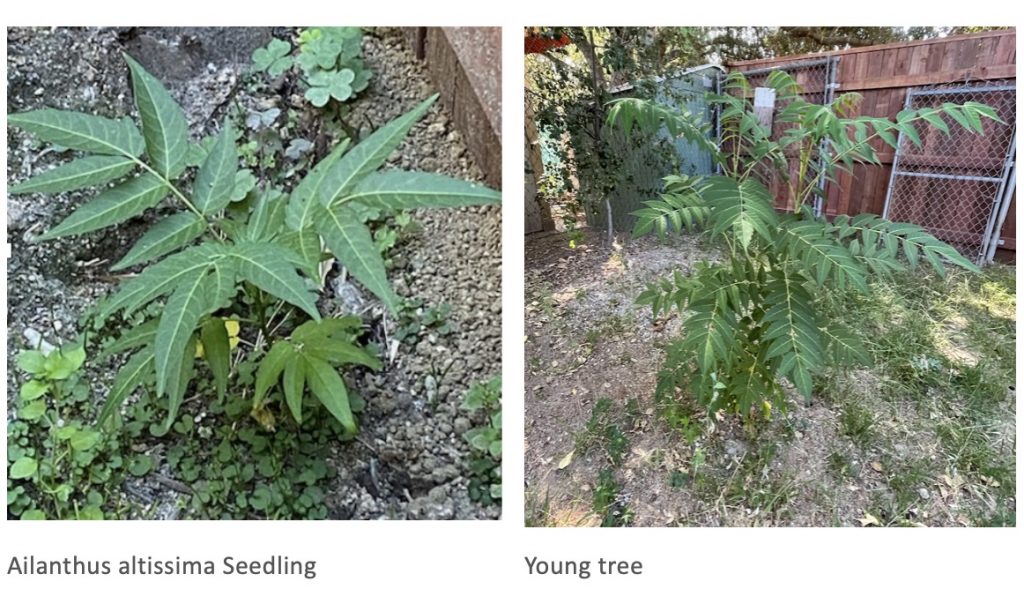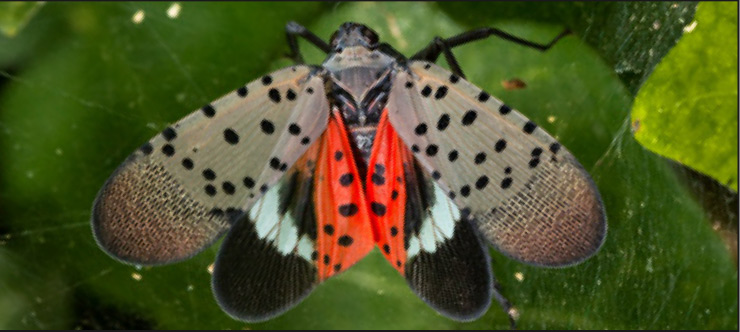Invasive Plant and Insect Species Duo Ailanthus altissima and Spotted Lanternfly

The Ailantus altissima is also known as the tree-of-heaven; Chinese sumac; Stinky Tree and, here in Pasadena, the Tree of Hell.
It is native to China and was first introduced as an ornamental tree in the Eastern United States in the 1700’s and was found in nurseries by the 1840s. Due to its prolific seed capacity and creeping root system, it soon escaped Eastern gardens, and established itself in the wild. It is now considered a dreaded invasive species throughout the United States.
It is believed to have been established in California during Gold Rush days in in the mid 1800s through Chinese immigrants. It has migrated to other regions of California and is typically found primarily in disturbed, semi-natural habitats along roadways.
Over time, it has spread exponentially in our local area along freeway, in parks and even in our own backyards.
This fast growing deciduous tree is considered invasive because of its ability to establish, spread quickly and dominate landscapes, as well as its ability to suppress surrounding vegetation because it secretes a toxin.
It has large, compound leaves with often asymmetrical l leaflets which can smell like rancid peanut butter. The fruits are crescent shaped and are called samaras. The trees produce thousands of seeds each year.

The fast growth of the tree also causes issues in the urban canopy because they can interfere with power lines and cause the risk of fire and other disasters.
Eradicating the trees takes care because simply cutting off the growth without applying a growth suppressant or removing the root can cause dozens of new shoots to spread out from the roots and establish a forest of new seedlings. Removing them when they are small and the root removed is best.
There are several helpful videos on youtube that provide detailed instructions on eradicating the trees when they are larger specimens.

Spotted Lanternfly
The proliferation of the tree of hell has sounded another alert because it is the preferred host for an invasive insect pest called the Spotted Lanternfly (Lycorma delicatula). This insect was first reported in Pennsylvania in 2014 and has been intercepted on airplanes headed to California from the East Coast. It can be destructive to other tree species as well as food crops.

Kill or catch the Spotted Lanternfly to stop the spread
